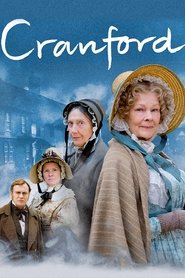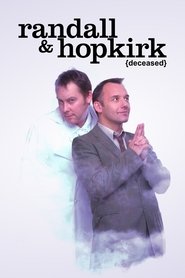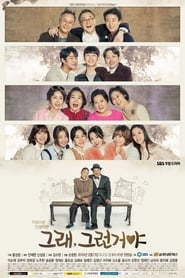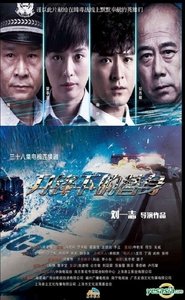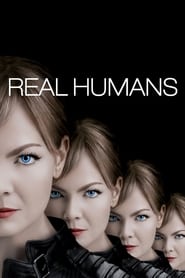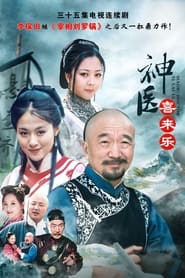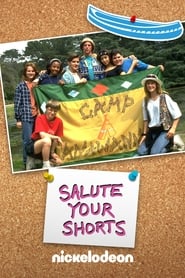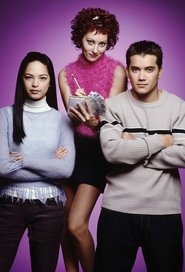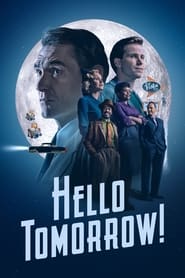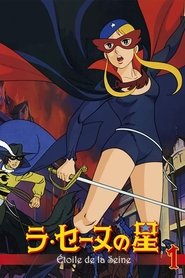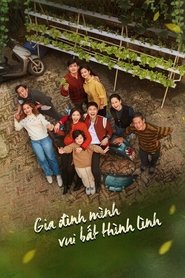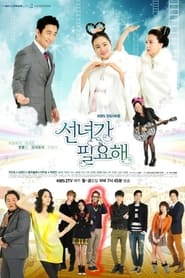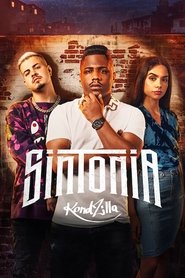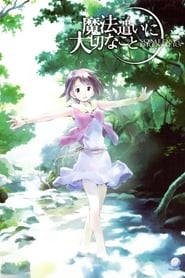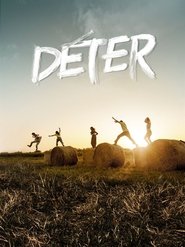Best Drama TV Series - Page 388
-
Cranford
2007
star 8.1A rich and comic drama about the people of Cranford, a small Cheshire town on the cusp of change in the 1840s. Adapted from the novels by Elizabeth Gaskell. -
Randall & Hopkirk (Deceased)
2000
star 6.1A modern day version of the 1969 detective series about Private Investigator Jeff Randall, who is aided in cases by the ghost of his deceased partner Marty Hopkirk. -
Real Humans
2012
star 7.5Set in a parallel universe, Real Humans imagines a world where robots have become so human that they're barely distinguishable from real humans and follows the resulting emotional effects on two families as well as the trials of a group of robots who have attained free will and want their freedom from human ownership. -
Salute Your Shorts
1991
star 7.4Salute Your Shorts is an American comedy television series that aired on Nickelodeon from 1991 to 1992 and in reruns until early 1999. It was based on the 1986 book, Salute Your Shorts: Life at Summer Camp by Steve Slavkin. The series, filmed at Franklin Canyon Park and the Griffith Park Boys Camp within Griffith Park in Los Angeles, was set at the summer camp Camp Anawanna. It focuses on teenage campers, their strict and bossy counselor, and the various capers and jocularities they engage in. The title comes from a common prank campers play on each other: a group of kids steals a boy's boxer shorts and raise them up a flagpole. Hence, when people see them waving like a flag, other kids would salute them as part of the prank. -
Fireflies
2004
Fireflies
2004
Fireflies is an Australian television show which aired on the Australian Broadcasting Corporation in Australia and RTÉ One in Ireland. It debuted on 7 February 2004 and screened as 22 episodes. The series was set in the fictional country town of Lost River, population 487. It was centred on the lives of a group of volunteer firefighters, during the hottest, driest summer in decades. The theme song "Beautiful Feeling" was written and performed by Paul Kelly. -
Edgemont
2001
star 6.1The lives of students at McKinley High School in Edgemont, a fictitious suburb of Vancouver, British Columbia. -
Hello Tomorrow!
2023
star 6In a retro-futuristic world, charismatic salesman Jack Billings leads a team of fellow sales associates determined to revitalize their customers' lives by hawking timeshares on the moon. -
Pluto
2024
star 8.6Ai-oon is the disappointing twin of successful and beloved Ob-oom. They aren't close. On Ob-oom's wedding night, she takes Ai-oon aside and makes a request of her. Ob-oon and her husband Paul will be going away for their honeymoon and she'll be leaving something important behind: a lover, May, she hasn't broken up with—and she wants Ai-oon to do it for her. In the early morning following the wedding, Ai-oon learns that the newlyweds got into an accident. Paul has passed away and Ob-oom is in a coma. When Ai-oon decides to fullfil her sister's request, she's shocked to learn that May is both blind and a woman. She finds herself unprepared to complete the task. -
The Star of the Seine
1975
star 6.7La Seine no Hoshi is an anime series by Sunrise, which premiered in Japan on Fuji TV from April 4, 1975 and finished its run on December 26, 1975, spanning a total of 39 episodes. The title translates to English as "Star of the Seine" or "The Seine's Stars." It is based on Alain Delon's 1963 movie La Tulipe noire. It was created by Mitsuru Kaneko, and was directed by Masaaki Ōsumi and Yoshiyuki Tomino. It was written by Sōji Yoshikawa, while the character designer was Akio Sugino. The music for the series was composed by Shunsuke Kikuchi. -
Suddenly Happy Family
2023
star 9.5The life of an extended family is not always peaceful because of differences in personality, lifestyle, and the interior of each small family. -
I Need a Fairy
2012
star 5Fairy mother Wang-Mo and her daughter Chae-Hwa go down to the ground to have a bath at a hot spring, before Chae-Hwa is to get married. They see a bunch of extras for some kind of filming session and they are wearing fairy outfits. After taking their bath, they put on their fairy outfit. The try to go back up, but find themselves stil grounded. Se-Joo is the president of 2H Entertainment. He lives with his 2 children and his twin. His son Kook-Min, wants to become an actor, even though his acting skills are poor. His daughter Na-Ra is a model student. Se-Joo becomes upset after discovering his son is taking part in the filming. Along the way, Se-Joo happens to steal a glance at fairy mother Wang-Mo and her daughter Chae-Hwa taking a bath. He finds Chae-Hwa attractive, but leaves. Fairy mother Wang-Mo and her daughter Chae-Hwa go to the film shooting site to find their fairy outfits. They are handed the business for 2H Entertainment and told to go there to find their fairy costumes. -
Sintonia
2019
star 8.2Told through three different characters' perspectives, the story of Sintonia explores the interconnection of the music, drug traffic, and religion in São Paulo. In the quest to be somebody, many paths will converge. -
O Outro
1987
O Outro
1987
-
Someday's Dreamers
2003
star 6.2Someday's Dreamers is a manga written by Norie Yamada and illustrated by Kumichi Yoshizuki. It was serialized in Kadokawa Shoten's Comic Dragon magazine from May 2002 to January 2003 and was later collected in two bound volumes. In 2006, Tokyopop released the manga in the United States under the name Someday's Dreamers. Someday's Dreamers was also adapted into an anime series that was produced by J.C.Staff under the direction of Masami Shimoda. It is loosely based on the storyline of the first manga series with new characters added to the story. It ran for a total of 12 episodes on TV Asahi and was later licensed by Geneon Entertainment USA. However, due to the closure of Geneon USA, the series has been relicensed by Sentai Filmworks. Another story set in the same universe, Someday's Dreamers: Spellbound, written and drawn by the same author and illustrator, was serialized in Kadokawa Shoten's Comic Dragon Age. It ran from December 2003 to February 2006 and was later released in five bound volumes. In 2006, Tokyo -
Devils
2020
star 7.3After being implicated in a deadly scandal, a trader at a leading London bank fights to clear his name, but instead uncovers an intercontinental conspiracy masterminded by powerful forces operating in the shadows. -
Déter
2023
Déter
2023
